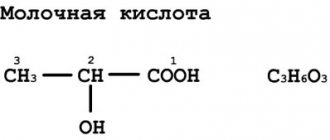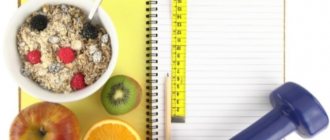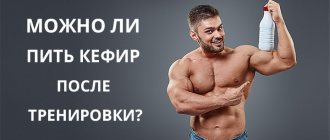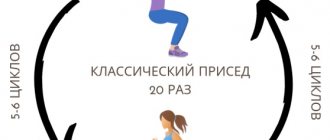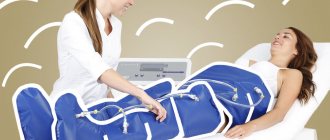Fast carbohydrates when gaining weight
Simple or fast carbohydrates belong to the group of monomolecular monosaccharides.
Among them are:
- maltose (sugars found in malt and honey);
- lactose (found in milk);
- sucrose (is the main component of baked goods and sweets);
- fructose (especially useful for diabetics).
Simple carbohydrates perform the following functions:
- activate the synthesis of enzymes and hormones in the body, at the same time controlling metabolism;
- stimulate brain function;
- fight depression and stress;
- replenish glycogen levels;
- build a cell framework;
- neutralize toxins.
Fast carbohydrate foods include:
- ice cream;
- white sugar;
- carrot;
- confitures;
- vegetables rich in starch;
- honey;
- juices;
- carbonated drinks with sugar;
- sweet fruits;
- flour and baked goods;
- beet;
- mayonnaise;
- beans;
- ketchup;
- lentils;
- watermelon;
- yoghurts with sugar;
- alcohol.
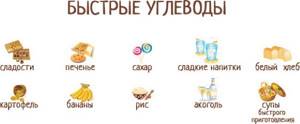
If there is an excess of fast carbohydrates in the body:
- caries develops;
- there is a tendency to obesity;
- followed by gastrointestinal diseases;
- metabolic disorders occur;
- manifested: cellulite, swelling, dermatitis;
- blood pressure surges occur.
Fast carbohydrates are foods that help quickly recreate the daily glycogen requirement for muscles. Such substances perfectly supply the body with energy and allow it to fully recover after intense training. They are instantly absorbed and processed. Muscles are fast and slow twitch fibers that contain sarcomeres and myofibrils. Their growth occurs not during training, but after it.
When exercising in the gym, muscles:
- partially torn;
- tense up;
- get injured.
Muscle growth will be observed during the recovery process. In this case, the injured cells will be replaced by numerous healthy ones. For more visible results, months of active sports will be required.
Constant physical exercise guarantees stable muscle growth. This increase is also called muscle hypertrophy. This process is possible only with regular increase in loads and overcoming the usual barriers.
Hypertrophy or muscle growth is promoted by completely safe:
- nutrition;
- recovery;
- testosterone production stimulants;
- workout.

The table below shows the time it takes for food to be digested:
| Food | Absorption time |
| Pork | Up to 6 hours |
| Water | Instantly |
| Lamb and beef | 4 hours |
| Juices from vegetables and fruits | Up to 20 min |
| Nuts and seeds | 3 hours |
| Vegetable broth | From 10 min |
| Turkey and chicken | Up to 3 hours |
| Berries and fruits with high water content | Up to 20 min |
| Dairy and fermented milk | 2 hours |
| Citrus and grapes | 30 min |
| Beans | 2 hours |
| Salads with vegetables without oil | 40 min |
| Cereal porridge | 2 hours |
| Bananas and peaches | 40 min |
| Jerusalem artichoke and potatoes | Up to 2 hours |
| Pears and apples | 35 min |
| Fish | 1 hour |
| Corn and zucchini | Up to 50 min |
| Vegetable and butter salads | Up to 1 hour |
| Eggs | 1 hour |
| Cabbage | From 40 min |
For lean ectomorphs, carbohydrate foods should make up more than 50% of the daily food intake.
But of these nutrients, it is better for people with a similar physique to prefer natural or complex (slow), for example:
- lentils;
- potato;
- rice;
- vegetables;
- oatmeal;
- durum wheat pasta;
- beans.
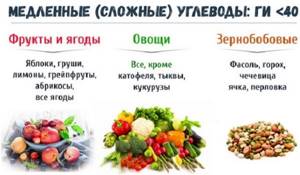
Fast carbohydrates will instantly penetrate the blood and cause fatigue.
These include:
- jam;
- sugar;
- bakery;
- candies.
Ectomorphs should not get too carried away with these foods with a high glycemic index. Fast carbohydrates are foods that increase muscle mass by stretching the body's cells. Such food recharges athletes and prepares them for an energetic start to training. It also enhances the results of physical exercise. Excess glucose after heavy exercise will not be stored in fat. It will turn into glycogen, which will directly go to the energy storage of the liver.
People with a normal physique or mesomorphs, on the contrary, are even recommended to get carried away with sweets and baked goods to increase muscle mass. Carbohydrates in their nutritional ratio should be 40-50%.
Complex carbohydrates or foods with the lowest glycemic index are most suitable for full endomorphs:
- cucumbers;
- salads;
- tomatoes;
- broccoli.
Simple carbohydrates should still become enemies for people with slow metabolism.
Products containing these substances are:
- candies;
- sweet carbonated drinks;
- cakes.
Endomorphs can eat vegetables containing starch, but with more restraint.
These include:
- corn;
- carrot;
- potato.
The molecular composition of simple carbohydrates contributes to their rapid digestibility and absorption. Such nutrients contain the smallest number of elements. Therefore, they decompose very quickly during an oxidation reaction. Carbohydrates begin to be converted into glucose within 30 minutes after they enter the body.
How to calculate your daily calorie intake?
To increase muscle mass, the following ratio of BJU is required - 35/30/55, that is:
- 35% should be proteins;
- 30% may be fat;
- carbohydrates in the daily diet should be 55%.
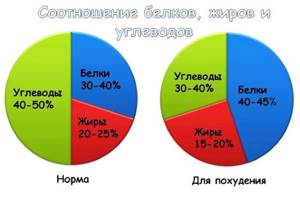
Further calculations are carried out using the Geor formula, namely:
- Body weight in kg is multiplied by 10.
- Height in cm is multiplied by 6.25.
- Age in city is multiplied by 5.
- The results of points 1 and 2 are added up, and then the number from step 3 is subtracted from the result.
- Men add 5 to the result, and women subtract 161 from it.
- The resulting number is multiplied by A, where A is a coefficient that indicates the physical level of human development:
- 1,2 – practically absent (no sports activities);
- 1,375 – weak (with 1 or 3 workouts in 7 days);
- 1,55 – average (3-4 trainings per week, 1 hour each);
- 1,7 – high (with daily training);
- 1,9 – hyperactive (with numerous sets every day).
Next, the resulting calories are converted into grams, given that 1 g of fat is 9 calories, and 1 g of carbohydrates or protein is 4 calories. So, for example, the result of 1300 is multiplied by 0.35 or 0.55, and then divided by 4 - the daily amount of protein or carbohydrates per g is obtained. Fats in g are calculated using a similar scheme, only divided by 9.
Creatine transport
In my opinion, creatine is a must-have supplement! I recommend you take it every day, both because of its well-known strength gains and creatine's lesser-known ability to improve cognitive function and improve insulin sensitivity.
It is known that taking creatine along with carbohydrates increases intramuscular nutrient content. This is explained by the fact that insulin promotes the transport of creatine and increases the ability of muscles to accumulate this metabolite.
In addition, insulin can increase the accumulation of electrolytes in muscle cells, which, along with replenishing intramuscular creatine stores, increases cellular volume. And an increase in cellular hydration and volume contributes to the rapid start of anabolic processes.
How much and what to eat
Carbohydrates are the main energy sources during strength training to gain muscle mass.
The following food characteristics are also important:
- appropriate time for appointment;
- optimal amount of water;
- harmonious combination of nutrients;
- calorie content;
- reception frequency.
Before training
Before starting physical activity, you need to eat 2 hours before.
Foods with complex carbohydrates should be preferred, for example:
- mixture with proteins and carbohydrates;
- fruits and vegetables;
- porridge;
- pasta.
Serving sizes before workouts can be normal, not too high in calories (300 kcal for the male population and 200 kcal for the female population).
After training
During recovery, immediately after exercise, you usually drink a protein shake. This is done in order to replenish glycogen reserves. 1.5 hours after training, have a hearty dinner.
Proteins as an alternative
We mentioned earlier that it is not recommended to close the carbohydrate window with proteins, since the body will burn proteins for energy. However, this method will be effective in the case of extremely intense drying (source - PubMed).
Be sure to take several factors into account:
- When burning proteins, the body spends more energy (for conditional digestion and breakdown).
- It will burn the minimum required amount of energy to stop catabolism, while the rest of the proteins will still be spent on its target task (formation of amino acid chains and accelerated restoration of muscle tissue).
List of foods for weight gain
The following foods will be important for gaining muscle mass:
- Proteins: pearl barley and buckwheat porridge; lean meat; millet; seafood; nuts and beans; all dairy; eggs.
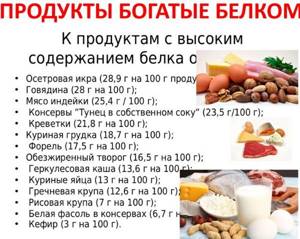
- Fats: butter; fatty sea fish; milk fats.
- Carbohydrates: muesli; vegetables; rice; fruits; pumpkin; cereals; potato; beans; raisin; dates.
Fast carbohydrates are foods that restore athletic strength after active sports and trigger the muscle growth response during rest. The glycogen produced when consuming them replenishes its reserves. Simple carbohydrates also release more insulin than protein does, either on its own or from muscles. The latter, thanks to this phenomenon, are not destroyed.
Sample menu
For those who want to build muscle, the following sample menu is suitable.
Monday:
- 1st breakfast : oatmeal with nuts and apple.
- 2nd breakfast : chicken with vegetables and potatoes.
- Lunch : cottage cheese with banana.
- Afternoon snack : fish with vegetables and rice.
- Dinner : tuna with vegetable salad.
- Snack : fruit salad.
Tuesday:
- 1st breakfast : buckwheat porridge with milk and honey; nuts; orange.
- 2nd breakfast : veal baked with vegetables and boiled pasta.
- Lunch: kefir with whole grain bread.
- Afternoon snack : cottage cheese with kiwi and honey.
- Dinner : baked mackerel with vegetable salad.
- Snack : Peanut butter and yogurt with strawberries.
Wednesday:
- 1st breakfast: oatmeal with apple; nuts; banana.
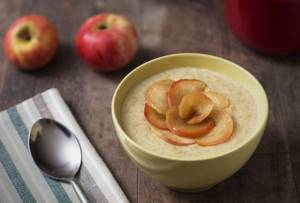
- 2nd breakfast : lean veal with vegetables and potatoes.
- Lunch : omelet with black bread and an apple.
- Afternoon snack : milk smoothie with fruit.
- Dinner : turkey with rice.
- Snack : cottage cheese with jam.
Thursday:
- 1st breakfast : rice with milk and nuts, apple.
- 2nd breakfast : veal and vegetable soup.
- Lunch : kefir with whole grain bread.
- Afternoon snack : fruit salad.
- Dinner : turkey with baked potatoes.
- Snack : vegetable salad.
Friday:
- 1st breakfast : omelette with chicken fillet and vegetables.
- 2nd breakfast : lean veal with potatoes and banana.
- Lunch : cottage cheese with apple and jam.
- Afternoon snack: fruit smoothie.
- Dinner : vegetable and chicken stew.
- Snack : Peanut butter and yogurt with strawberries.
Saturday:
- 1st breakfast : oatmeal with banana and nuts.
- 2nd breakfast : potatoes with chicken and vegetables.
- Lunch : kefir with whole grain bread.
- Afternoon snack: cottage cheese with kiwi honey.

- Dinner : buckwheat porridge with baked mackerel and vegetable salad.
- Snack : fruit salad.
Sunday:
- 1st breakfast : omelette with chicken and vegetables.
- 2nd breakfast : veal with vegetables and apple.
- Lunch : cottage cheese with banana and jam.
- Afternoon snack: fruit smoothie.
- Dinner : rice with chicken and vegetables.
- Snack : vegetable salad.
Fast carbohydrates are foods that can instantly convert amino acids into building blocks for muscle growth. They must be eaten during the open anabolic window (in the first hour after training). Eating this way also promotes rapid muscle development.
Alternative opinions
Everyone knows that after a workout the so-called protein-carbohydrate and other windows open (protein/anabolic, post-workout), they are called differently, but the essence is the same: supposedly protein (proteins) go to build muscles! We talked about this a little higher.
So this is a complete lie. (MYTH). I'm also inclined to agree, it's true! It's just a myth!
Yes, they talk about this in various glossy magazines, and they vitally recommend “after a workout you need protein,” etc. This whole thing is very beneficial for them (sports nutrition manufacturers) because they make money from people who buy all this in the hope of becoming a hulk.

Recovery after training begins with eliminating the oxygen debt and restoring, first of all, energy homeostasis, which is disrupted during strength training!
After training (for several minutes and even hours), our body tries to restore the level of high-energy phosphates and ATP in the cell, due to the activation of oxidative processes (primarily).
Also, within 12-48 hours after training, glycogen resynthesis occurs in the muscles and liver in the body! And this increases the energy potential of muscle cells. Those. by this I want to say that until the body restores the level of ATP in the muscles, anabolism (that is, muscle growth) = will not begin!!!

Conclusion: The need for protein (protein) after training does not occur earlier than 24-48 hours after training. This means that taking protein after a workout will do you absolutely no good.
It will only benefit the sports nutrition manufacturers who sold it to you. And, yes (if you haven’t realized it yet) - there is no anabolic window (which lasts the first 20-30 minutes). It is a myth. There is an anabolic window that lasts 24 hours after training.

And there are studies by Koopmana and his co-authors, who found that after strength training, adding carbohydrates to the whole body (15 or 0.6 g/kg body weight) had no effect at all on the overall protein balance in the human body (including muscle tissue) for 6 hours after training, compared to taking protein (protein) solo. Those. only one protein (protein).
Other studies (Staples published a paper) showed that after strength training the legs, the increase in muscle protein synthesis when consuming 25 grams of whey isolate remained exactly the same if, in addition to protein, athletes also took 50 grams of maltodextrin (a fast carbohydrate).
How to cook meals
Sprouted wheat added to dishes will be a source of additional arginine and chromium. It is useful to season vegetable salads not only with sunflower oil, but also with its seeds.
When cooking, it is better not to bake or fry foods, but to:
- steam;
- stew;
- cook
Vegetables and greens are eaten raw. 2-3 hours before strength training, eat protein-carbohydrate meals.
Immediately after performing the exercises, drink special cocktails for sports with:
- minerals;
- protein;

- vitamins.
What to eat before and after training
After strength training, eat hard pasta with a green salad or dietary meat. Then they drink ginger root tea. After all, such a drink relieves fatigue and relieves pain. Protein foods after workouts can be supplemented with a pineapple dessert. It is similar in effect to ginger.
The best carbohydrates are those that have a medium or low glycemic index, namely:
- vermicelli;
- basmati rice;
- Chinese noodles;
- bran bread;
- low-fat cottage cheese;
- durum pasta;
- tomatoes;
- cereals;
- green vegetables;
- Brown rice.
60 minutes before training you can eat:
- gainer;
- kefir;
- boiled potatoes;
- diet yogurt;
- jam.
After physical activity, in the first 30-50 minutes they usually eat or drink:
- dried fruits;
- gainer;
- fruits;
- nuts;
- bread;
- eggs;
- oatmeal;
- dark or bitter chocolate;
- low-fat cottage cheese;
- Black tea;
- milk;
- raspberry jam.
Before training, it is completely undesirable to eat:
- donuts;
- junk fast food;
- fat meat;
- chips;
- fried potatoes.
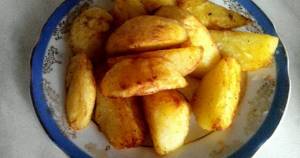
Solid foods are eaten 4 hours before strength exercises, and fast carbohydrates 2-3 hours before them.
1 hour before going to the gym consume:
- sports drinks (their single dose);
- fruits;
- energy supplements in the form of gels.
Half an hour before exercise, eat or drink:
- Whey Protein;
- 1 large fruit;
- strawberries;
- pear or apple.
2-3 hours before training the following are allowed:
- water;
- fruits;
- yoghurts;
- bakery products;
- pasta.
3-4 hours before strength training they usually take:
- energy bars;
- water;
- fruits;
- bread or sandwiches;
- pasta with tomatoes;
- yogurt;
- baked potato;
- cereal with milk.
The following will help you start or finish your morning workout:
- low-fat fish with vegetables or potatoes;

- poultry fillet with rice or whole grain bread;
- oatmeal with egg white omelette;
- lean meat with pasta or potatoes;
- cottage cheese and bread.
Carbohydrates, in their own way, act as anabolic substances that prevent muscle protein from breaking down during strength training. Foods containing these compounds, both fast and complex, support muscle tone while restricting calories. This also keeps the muscles intact.
How many calories are burned during an hour-long workout?
The answer to this question allows the athlete to clarify the nuance regarding how beneficial it is to consume simple carbohydrates during the recovery period after training.
According to a study, even the most strenuous workouts burn about a quarter of muscle glycogen stores. Its amount in the muscles is approximately 400, and in the liver - 100 grams. High-intensity interval training and heavy weight exercise have not been shown to increase muscle glycogen expenditure in one study. This way, regardless of the type of workout, the same amount of calories is burned.
The intensity of exercise does not depend on the load and requires the same amount of carbohydrate to be replenished. The amount of glycogen consumed should be similar to the calories expended. And if, after completing the training, you eat, for example, a chocolate popsicle or a candy bar containing 10-50 grams of carbohydrate, this will not allow you to replenish the depleted reserves.
Basic nutrition rules for muscle growth
The following is a selection of recipes for carbohydrate dishes:
- Porridge stewed with mushrooms . Soak 0.5 cups of buckwheat in water overnight. In the morning, take 200 g of champignons and stew them in butter until tender. Then the vegetables are mixed with the porridge that has swollen overnight. After this, everything is seasoned with Greek yogurt with thyme.
- Zucchini with cereals . 100 g of wheat cereal or spelled pour 1 tbsp. water and bring to a boil. Then add bay leaf and cook for about 30 minutes with constant stirring (once every 3 minutes). Peeled zucchini halves are peppered and salted. Next they are placed in a baking dish.
Cooked cereals cool and complement them:
- seasonings;
- chicken yolk;
- mustard;
- garlic
Filled with filling and sprinkled with grated cheese, place the zucchini in the oven at 200° for 30 minutes. The finished dish is decorated with herbs. Lobio. 150 g of pre-soaked beans are boiled until soft. The onion is chopped and simmered with curry in a frying pan without oil.
Then add the following and simmer for 15 minutes:
- beans;
- khmeli-suneli;
- 50 g walnuts;
- black pepper.
The main principles of nutrition for increasing muscle mass include:
- Regular formation of the diet, in which the menu is planned for the next day. With this rule, training will be more effective and easier. After all, a balanced diet with clearly calculated calories helps to quickly achieve the effect of training.
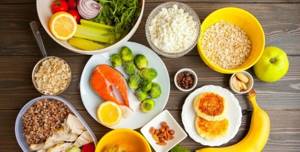
- Calibrated period for taking carbohydrates. Fast ones are consumed in the morning and after sports, and slow ones are consumed for breakfast or before training.
- Dependence of diet on body constitution.
- Eating food before bed. At night, they usually drink casein-based protein or eat cottage cheese. You can even take a protein shake at night. But to do this, they advise you to wake up on your own, and not with an alarm clock.
- Nutrition before and after training.
- Including healthy fats in your daily diet will increase testosterone levels. These cannot include: margarine; smoked; sausages; salo.
- Eating high-quality protein foods, preferably of plant origin.
- Supplementing your diet with protein shakes and gainers, if necessary.
- Eating at the same time and developing a meal schedule.
- Constantly increasing the calorie content of food.
- Frequent meals, up to 5-6 times a day and every 2-3 hours.
- Drinking enough water.
- It is advisable to completely avoid harmful simple carbohydrates: sweets; snacks; buns; fast food.
Despite all the value of protein after strength and high-intensity sports activities, you should not forget about fast carbohydrates. After all, products with them instantly supply amino acids to muscle molecules. And this contributes to their successful recovery and growth.
Carbohydrates, insulin and recovery
Muscle recovery from micro-damage is one of the most underrated cogs in the muscle-building engine. After all, the faster you recover from training, the more often you can train, and training frequency is a key player on the hypertrophy team.
Carbohydrate-induced insulin secretion does not itself lead to muscle protein synthesis, but it does slow the breakdown of muscle tissue. In fact, the anti-catabolic characteristics of carbohydrates make them anabolic. What-o-o? I remind you. You work to break the misassociation of anabolism with protein synthesis.
In this light, carbohydrates are indeed anabolic and make an invaluable contribution to the construction of skeletal muscle, and the presence of insulin has a positive effect on that eternal confrontation between protein synthesis and breakdown, which is called nitrogen balance.

In addition, carbohydrates increase the speed of recovery. During high-intensity training, your immune system is temporarily weakened, and carbohydrates reduce the degree of this immunosuppressive effect and replenish depleted glycogen stores. Should you fill your stomach with carbohydrates immediately after a workout? It depends on the form of the training process, the frequency of training and your strategic goals.
If you only train three times a week, there is no urgent need to feed your muscles with carbohydrates immediately after training; Standard consumption of carbohydrate foods throughout the day is sufficient to replenish glycogen reserves. If you're trying to gain a ton of muscle mass, it won't hurt to gulp down a couple of bananas immediately after finishing your workout, regardless of when you're consuming other nutrients.
